At a Glance
- A production line operates at the pace of its slowest stage, and true balance occurs only when every worker’s task takes the same amount of time.
- Line balancing can minimise the imbalances in workload between stages.
- You can expect a 10% improvement in productivity if your business has not implemented a formal line balancing programme.
In any process—whether production, manufacturing, or business-related— there will be a bottleneck stage. This stage is the slowest point in the sequence. When multiple individuals or machines are involved, imbalances in workload between stages often arise, causing further delays.
There is a technique for minimising these imbalances, known as line balancing, which involves balancing the workload by stage. The aim is to reduce the time taken at the bottleneck stage, thereby increasing the overall throughput. Line balancing focuses on maximising the overall productivity of the line while ensuring an uninterrupted flow of input to the bottleneck stage.
What is Line Balancing?
A production line operates at the pace of its slowest stage. True balance is achieved only when every worker’s task takes the same amount of time. Put simply, line balancing is the strategic and operational process of distributing tasks and resources, such as manpower, equipment, and inventory, across a production line or workflow.
Key Aspects in Line Balancing
Line balancing is intended to optimise efficiency, minimise waste, eliminate bottlenecks, and ensure a smooth and predictable flow of operations. The primary goal is to match available capacity with workload demands.
To better understand this technique, the following are five key aspects of line balancing:
1. Optimising Manpower and Resource Allocation
Line balancing involves carefully calibrating the number of personnel and equipment required to handle a given workload in order to prevent either idle time (excess capacity) or over-burdening (bottlenecks).
Renoir helped a district cooling provider in the Middle East by implementing a “Manpower Calculator Tool” that effectively allocated staff and balanced workloads across various regions, thus avoiding the need for additional resources. The project also supported the establishment of a centralised scheduling process that balanced the risks and workload with the availability of technicians in their maintenance operations.
2. Streamlining Workload Distribution and Flow
This involves ensuring that work progresses smoothly through a process to prevent backlogs or accumulation at certain points.
A leading softwood manufacturer in South America was experiencing critical inefficiencies in its maintenance and production functions, which were hindering its ambitions to grow the business. To optimise these processes, we installed a Workload Balancing Tool to help them streamline resource allocation and workload distribution. By the end of the project, they had reduced the corrective maintenance from 70% to 14%. Labour efficiency soared, leading to an increased in Overall Equipment Efficiency (OEE) in three of its plant units.
3. Reducing Waste and Improving Utilisation
One of the main benefits of successful line balancing is reducing various forms of waste, such as unproductive labour, excessive inventory and unnecessary activities. These all contribute towards improved overall resource utilisation.
A vertically integrated pharmaceutical company sought to reduce costs and improve productivity at one of its facilities in South Asia. Renoir was engaged for the project, during which our consultants analysed 21 departments covering 576 employees. Our consultants carried out observation studies, including Ratio Delay and Day-in-the-Life-of (DILO), to identify opportunities for manpower optimisation. This resulted in a validated headcount optimisation opportunity of 9%.
4. Improved Planning and Scheduling to Balance Demand
A robust planning and scheduling system can help to ensure effective line balancing. Such a system can anticipate demand and allocate resources proactively and dynamically.
A large oil palm plantation in Southeast Asia partnered with Renoir to increase harvesting efficiency. During the project, our consultants identified gaps in control and supervision, which led to highly variable productivity, delayed schedules, and field supervisors being left idle. We improved harvesting efficiency by implementing a system whereby workers could be reallocated between teams to address any manpower allocation issues if daily progress fell behind schedule.
5. Adapting to Variability and Achieving Performance Targets
Line balancing is often used to manage fluctuating demand, ensuring that operational targets are consistently met regardless of external or internal variability.
A European container terminal operator sought to improve its financial performance, specifically aiming to more than double its Earnings Before interest and Taxes (EBIT). Renoir was engaged for the project. Our consultants aimed to balance workloads and resource deployment by focusing on the planning and scheduling function. By the end of the project, we had successfully quantified and managed 96 change initiatives, ultimately delivering 82% of the EBIT target.
If your business has not implemented a formal line balancing programme, you can typically expect a 10% productivity improvement. The benefits of line balancing can be realised almost immediately upon implementation, so it should be planned as a ‘quick win’ activity.
Beyond line balancing, there are usually many other causes of lost time that need to be systematically addressed. In many cases, quality improvement initiatives will be necessary. Renoir has extensive experiences of managing and dealing with complex end-to-end balancing environments.
Are you looking for a sure-fire way to optimise workflow through equal task distribution?













